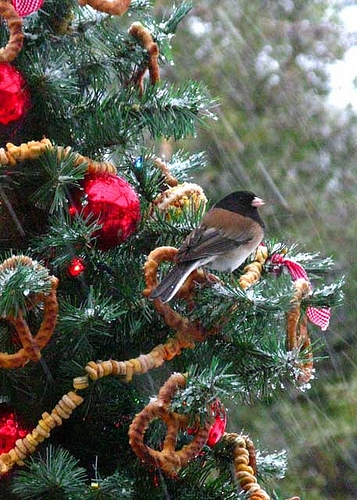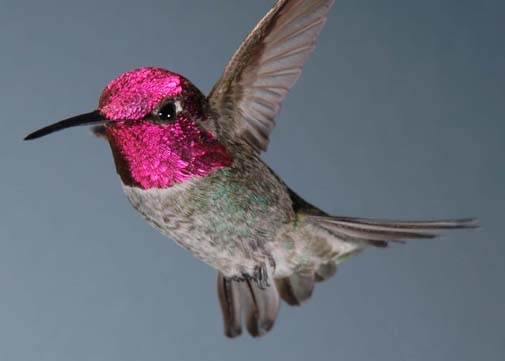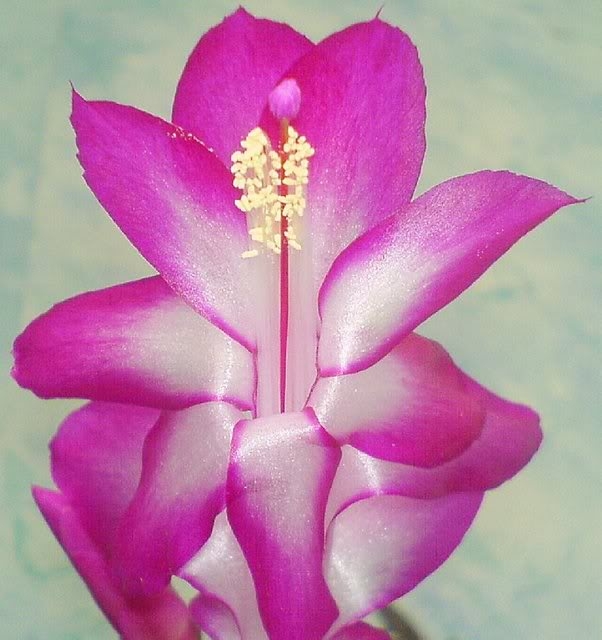 I love the holiday season. Every year I decorate a plant or tree outside my window where I can see it from inside the house. I use edible ornaments that attract small songbirds. Both fruit-eating and seed-eating birds will appreciate the dietary boost during the lean winter months. For the fruit-eaters string garlands of dried apples, bananas, hawthorn berries, cranberries and grapes onto sewing thread. You can also thread them onto wire loops with raw whole peanuts in the shell. Wire orange slices to the branches.
I love the holiday season. Every year I decorate a plant or tree outside my window where I can see it from inside the house. I use edible ornaments that attract small songbirds. Both fruit-eating and seed-eating birds will appreciate the dietary boost during the lean winter months. For the fruit-eaters string garlands of dried apples, bananas, hawthorn berries, cranberries and grapes onto sewing thread. You can also thread them onto wire loops with raw whole peanuts in the shell. Wire orange slices to the branches.
Seed-eaters relish stalks of ornamental wheat tied to the branches, along with ears of ornamental corn. The favorite of all the "ornaments" is peanut butter-coated pinecones encrusted with wild birdseed mix and hung with florist wire. Millet sprays tied to the branches are a hit, too. Look around your garden for berries that you can use to decorate your tree as a present for the birds.
While you’re in the decorating mood, take advantage of this opportunity to . Cuttings from fir, redwoods, pine, holly, mahonia, strawberry tree, toyon and cotoneaster parneyi make fine additions to your wreaths and swags. But don’t whack off snippets indiscriminately. To reveal the plant’s naturally handsome form, prune from the bottom up and from the inside out. Avoid ugly stubs by cutting back to the next largest branch or to the trunk. If the plant has grown too dense, selectively remove whole branches to allow more air and sunlight to reach into the plant.
Be sure to strip the foliage from the portions of the stems that will be under water if you are using the cuttings in a bouquet.


 They bloom their heads off despite little care on my part. The show will continue for a month or more. They are the perfect plant in my opinion.
They bloom their heads off despite little care on my part. The show will continue for a month or more. They are the perfect plant in my opinion.